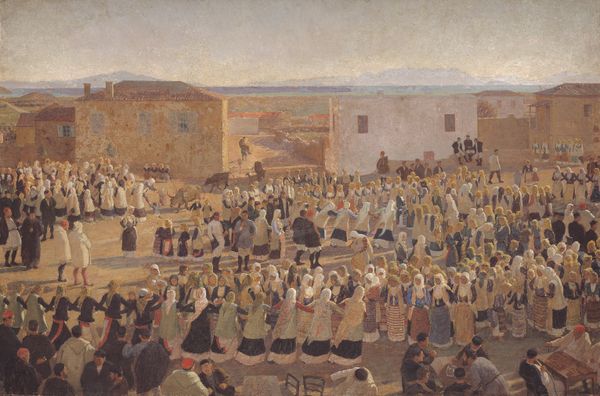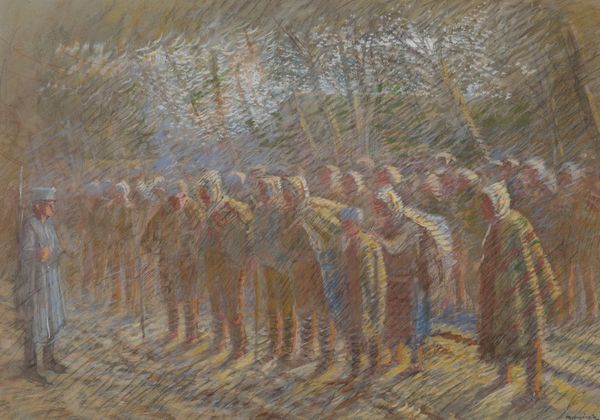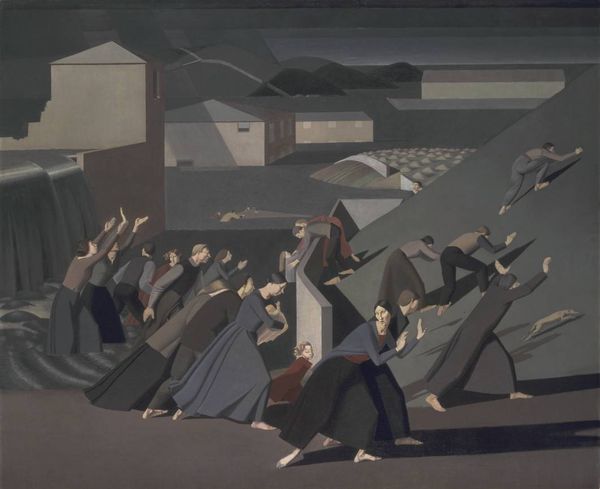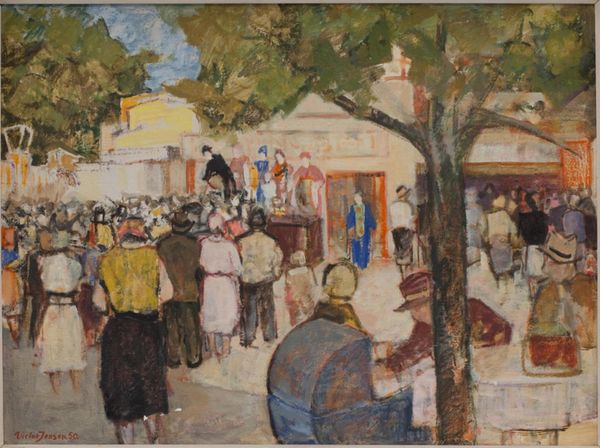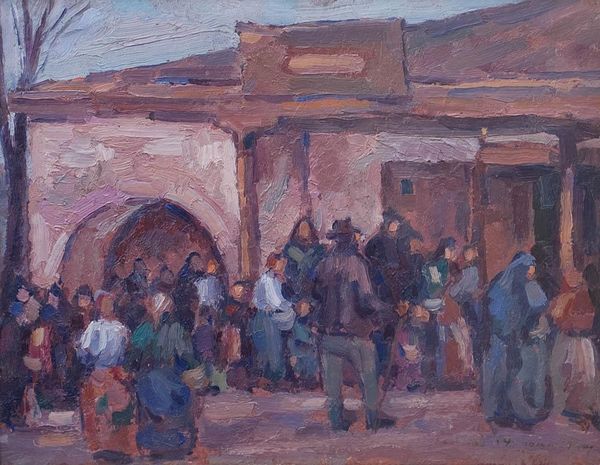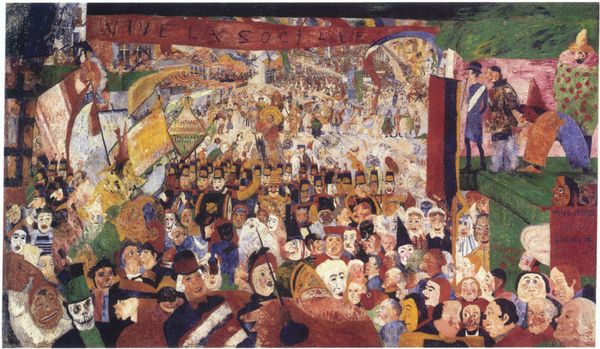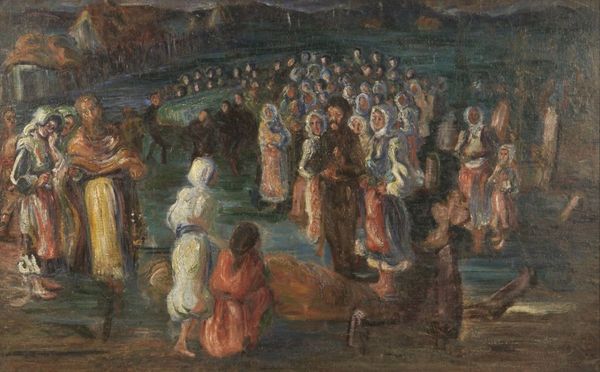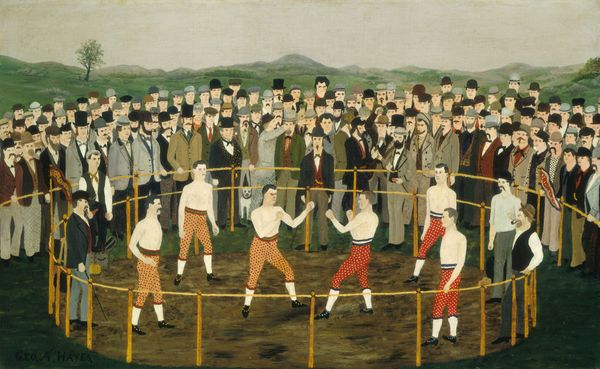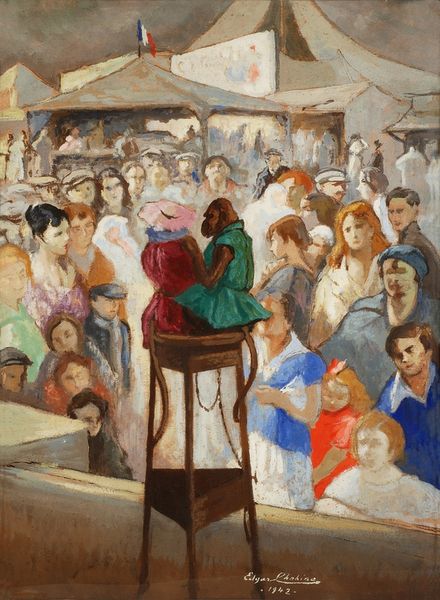
painting, oil-paint, canvas
#
narrative-art
#
painting
#
oil-paint
#
landscape
#
oil painting
#
canvas
#
genre-painting
#
history-painting
#
academic-art
#
realism
Dimensions: 53 cm (height) x 94.5 cm (width) (Netto), 59.7 cm (height) x 100.7 cm (width) x 4.6 cm (depth) (Brutto)
Curator: At first glance, there's an almost blinding quality to the light, rendering the crowd somewhat indistinct. The sheer number of figures arranged so uniformly creates a strong visual rhythm, but the forms themselves begin to dissolve in the overall scene. Editor: Today we are examining "Kvindedansen i Megara," or "Women Dancing in Megara," completed in 1889 by Niels Skovgaard. This painting, crafted with oil paint on canvas, is currently housed here at the SMK, the National Gallery of Denmark. It offers an intriguing look at Greek folk traditions through a 19th-century Danish lens. What's your interpretation? Curator: Skovgaard appears to be consciously grappling with the problem of depicting a collective identity. Look at the repetition of color blocks - white dresses, dark vests, positioned to form an almost geometrical grid, yet set against the organic shapes of the landscape. I see tension between the desire to capture individual likenesses, or the spirit of a group, against its reduction into a series of aesthetic components. Editor: Indeed. Skovgaard painted this after a journey to Greece. Considering that artistic exchange between Denmark and Greece was relatively infrequent at that time, one must examine this painting through the prism of colonialism. Note how the dancers in their native dresses form the main event, and they appear to be circumscribed within what reads as an essentially orientalist, European imagining. This artistic license allowed for a construction of an imagined past and identity onto a colonized population. Curator: A fascinating observation! This also informs our consideration of light, the near-whiteness that dominates. Perhaps we read the sun as less descriptive of a specific climate and time, and more a metaphorical device that "flattens" the dancers and transforms them into a field of study for Skovgaard’s brush, making each individual, ironically, less visible. Editor: Precisely. Also notice the buildings behind the square. Their boxy construction mirrors the geometric intention of the dancers in a row, thus creating not merely visual balance, but reifying Western architectural dominance of public spaces. Curator: Seeing the painting this way underscores its complex interplay of form and representation, highlighting not just what is visible, but also the socio-historical conditions of how art shapes culture and our interpretations of it. Editor: By focusing on its context, the painting unveils crucial socio-historical issues inherent in seeing a foreign nation through the eyes of a colonial explorer and the biases that shaped Skovgaard's representations of cultural identity.
Comments
No comments
Be the first to comment and join the conversation on the ultimate creative platform.
